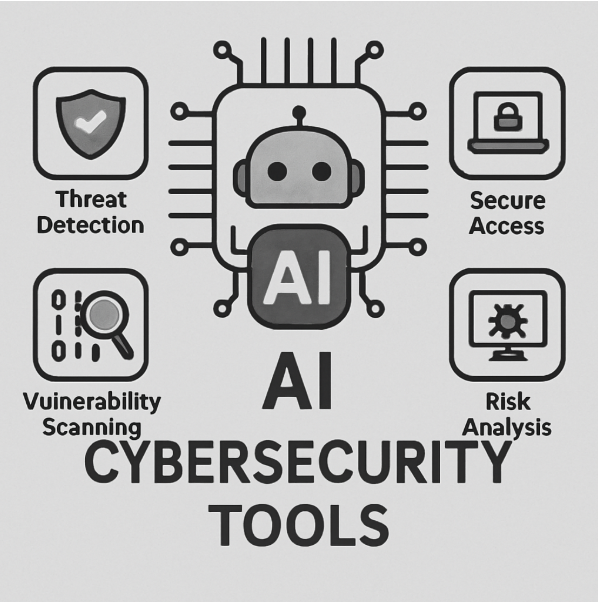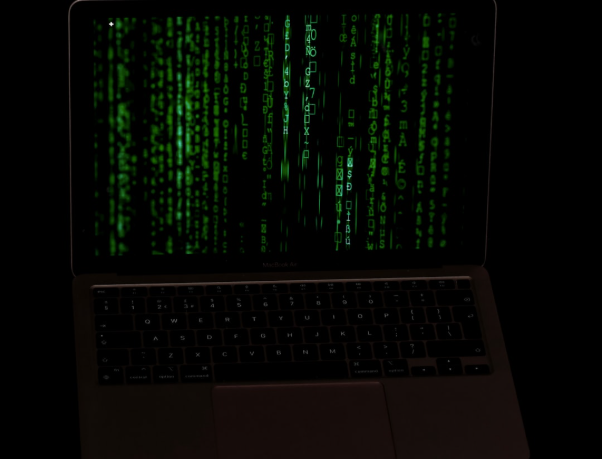Ethical hacking, often known as “white hat” hacking, is the practice of testing systems to identify and fix vulnerabilities before they can be exploited by malicious hackers. This proactive approach is crucial in safeguarding digital assets in an increasingly interconnected world. The essence of ethical hacking lies in its objective to strengthen defenses rather than exploit weaknesses, making it a cornerstone of modern cybersecurity strategies. As cyber threats continue to evolve, so too must the methods and tools used by ethical hackers to stay one step ahead of potential attackers.
The Role of AI in Ethical Hacking
AI’s ability to process vast amounts of data quickly and accurately makes it an invaluable tool in the realm of ethical hacking. By automating the detection of anomalies and patterns that may signify potential security threats, AI enhances the effectiveness of cybersecurity measures. This automation not only speeds up the identification process but also reduces the likelihood of human error, a critical factor in maintaining robust security. Furthermore, AI’s capacity for continuous learning ensures that it adapts to new threats, providing a dynamic defense mechanism in an ever-changing digital landscape.
AI-Powered Cybersecurity Tools
AI-driven tools are revolutionizing the cybersecurity landscape by offering more sophisticated methods to detect and mitigate threats. These tools leverage the power of machine learning and data analytics to provide a comprehensive defense against cyber attacks. Here’s how AI contributes to ethical hacking, transforming the way organizations secure their digital environments:

Automated Threat Detection
AI algorithms can analyze network traffic and system behavior to detect irregularities that might indicate a security breach. This automation allows for quicker response times, minimizing potential damage from cyber threats. By swiftly identifying unusual patterns, AI helps in thwarting attacks before they cause significant harm, thus preserving the integrity of digital assets. Moreover, automated threat detection reduces the dependency on manual monitoring, freeing up human resources to focus on more complex security challenges.
Predictive Analytics
By leveraging machine learning, AI can predict potential security vulnerabilities before they are exploited. This proactive approach enables organizations to fortify their systems against future attacks, thus maintaining a robust security posture. Predictive analytics not only aids in anticipating threats but also in understanding the evolving tactics of cybercriminals. By analyzing historical data, AI can forecast potential attack vectors, allowing organizations to implement preemptive measures and stay ahead of cyber threats.
Enhanced Decision-Making
AI supports ethical hackers in making informed decisions by providing comprehensive insights into potential threats. This not only aids in the identification of vulnerabilities but also in the development of effective mitigation strategies. The ability of AI to synthesize vast amounts of data into actionable intelligence empowers security teams to prioritize threats based on their severity and potential impact. This strategic advantage ensures that resources are allocated efficiently, enhancing the overall effectiveness of the cybersecurity framework.
The Ethical Implications of AI in Hacking
While AI presents numerous advantages, it also poses ethical considerations that must be addressed to ensure responsible use. The integration of AI in ethical hacking brings forth questions about privacy, bias, and accountability, each of which requires careful examination and management.
Balancing Security and Privacy
AI’s capacity to monitor and analyze personal data raises privacy concerns. Ethical hackers must ensure that their use of AI respects individual privacy rights while protecting organizational assets. This balance is crucial to maintaining public trust and complying with regulatory requirements. As AI systems become more sophisticated, they must be designed with privacy-preserving techniques, ensuring that data is protected and used ethically within the bounds of legal frameworks.
Ensuring Bias-Free AI
AI systems can inadvertently perpetuate biases present in the data they are trained on. It’s crucial for ethical hackers to ensure that AI tools are designed and trained to be unbiased, promoting fairness in cybersecurity measures. Addressing bias involves rigorous testing and validation of AI models to identify and mitigate any discriminatory behaviors. By fostering diversity in data sets and applying fairness algorithms, organizations can develop AI solutions that are equitable and just.
Accountability in AI-Driven Decisions
As AI tools become more autonomous, determining accountability for decisions made by these systems becomes complex. Clear guidelines and policies must be established to hold parties responsible for AI-driven actions in ethical hacking. Establishing accountability frameworks involves defining roles and responsibilities, as well as creating audit trails to track AI decision-making processes. By doing so, organizations can ensure transparency and trust in AI-powered cybersecurity initiatives.
Strategic Integration of AI in Cybersecurity
For CTOs, Business Strategists, and Innovation Managers, the integration of AI into cybersecurity strategies is not just about adopting new tools but aligning them with business objectives. This strategic alignment ensures that AI investments deliver measurable value and support long-term organizational goals.
Aligning AI with Business Goals
AI should be integrated into cybersecurity frameworks in a manner that supports business goals. This alignment ensures that technological advancements contribute to the organization’s overall strategy and growth. By leveraging AI to enhance security, businesses can protect their digital assets while driving innovation and competitiveness. Strategic alignment involves collaboration between technical and business teams to ensure that AI initiatives are aligned with the company’s vision and priorities.
Continuous Innovation and Adaptation
The dynamic nature of cyber threats necessitates continuous innovation in AI tools. Organizations must remain adaptive, regularly updating their AI systems to address new challenges and maintain a competitive edge in security. This commitment to innovation involves staying abreast of the latest advancements in AI and cybersecurity, as well as fostering a culture of experimentation and learning. By doing so, organizations can ensure that their security strategies evolve in tandem with emerging threats.
Building a Culture of Ethical AI Use
Organizations should foster a culture that prioritizes the ethical use of AI in cybersecurity. This involves training staff, establishing ethical guidelines, and promoting transparency in AI-driven security practices. Cultivating an ethical culture requires ongoing education and awareness initiatives to ensure that employees understand the implications of AI and adhere to ethical standards. By embedding ethical principles into the organizational fabric, companies can promote responsible AI use and enhance their reputation as trustworthy entities.
Real-World Applications and Success Stories

Several organizations have successfully integrated AI into their cybersecurity measures, showcasing its potential in enhancing ethical hacking. These success stories demonstrate the tangible benefits of AI in protecting digital assets and reinforcing security protocols.
Case Study: AI in Financial Services
A leading financial institution implemented AI-driven cybersecurity tools to protect sensitive customer data. By automating threat detection and leveraging predictive analytics, the institution not only improved its security but also built customer trust through robust data protection. The integration of AI enabled the institution to detect fraud and unauthorized access in real-time, significantly reducing financial losses. This proactive approach not only enhanced the security framework but also strengthened customer confidence, a critical factor in the highly competitive financial sector.
Case Study: AI in Healthcare Security
In the healthcare sector, a hospital network used AI to secure patient records against cyber threats. The AI system’s ability to quickly identify and mitigate threats helped the hospital maintain compliance with stringent data protection regulations, ensuring the safety and confidentiality of patient information. By employing AI, the hospital was able to monitor network activity continuously, providing an additional layer of security against potential breaches. This implementation not only safeguarded patient data but also enhanced the hospital’s reputation as a trusted healthcare provider.
Conclusion
AI’s integration into ethical hacking represents a significant advancement in cybersecurity. By enhancing threat detection, improving decision-making, and aligning with business objectives, AI empowers organizations to protect their digital assets effectively. The potential of AI to transform cybersecurity is immense, offering organizations the tools they need to navigate an increasingly complex threat landscape.
However, with great power comes great responsibility. Ethical considerations, such as privacy, bias, and accountability, must be at the forefront of AI’s application in ethical hacking. By addressing these challenges, organizations can harness AI’s potential to drive innovation and security in a responsible manner. The onus is on leaders to ensure that AI is used ethically, fostering trust and confidence among stakeholders.
In this rapidly evolving technological landscape, forward-thinking leaders have the opportunity to redefine cybersecurity strategies, ensuring that AI’s transformative power is leveraged ethically to foster a safer digital world. By embracing AI with a commitment to ethical principles, organizations can lead the way in creating a secure and equitable digital future.




